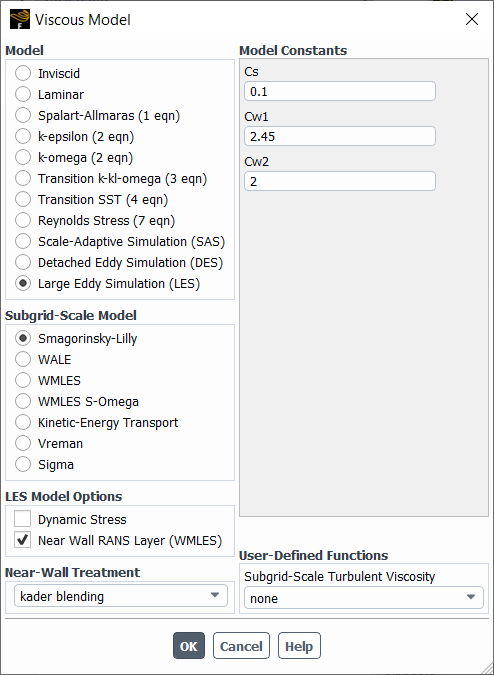A generic wall model, which can be combined with any algebraic LES model, is now available
as an LES model option for algebraic LES models. The formulation is based on the slightly
simplified S-Omega WMLES blending function :
(10–2) |
(10–3) |
where
(10–4) |
(10–5) |
(10–6) |
(10–7) |
is the wall distance,
is the strain rate,
= 0.41, and
is the maximum edge length for a rectilinear hexahedral cell (for other cell
types and/or conditions an extension of this concept is used).
The defaults for the constants and
could in principle depend on the LES model. The default values
= 2.45,
= 2 are found to ensure the best results for a wide range of Reynolds numbers
and different grid resolutions. For example, see the results of Sigma model WMLES periodic
channel flow simulations in Figure 10.4: Mean Velocity Profiles of a Periodic Channel Flow Obtained with Sigma WMLES).
After enabling beta feature access, as described in Introduction, the Near Wall RANS Layer (WMLES) option can be enabled from the Viscous Model dialog box under LES Model Options when either the Sigma, Vreman, Smagorinsky-Lily, or WALE model is chosen as a Subgrid-Scale Model. Constants Cw1 and Cw2 are available for model tuning in the same dialog box, under Model Constants as shown in Figure 10.5: Viscous Model Dialog Box with Near Wall RANS Layer (WMLES) Enabled.
You can also enable the wall model using following text command from the Fluent console:
define/models/viscous/les-model-options/near-wall-rans-layer?
The following commands can be used to modify the model constants:
define/models/viscous/les-model-options/cw1
define/models/viscous/les-model-options/cw2




